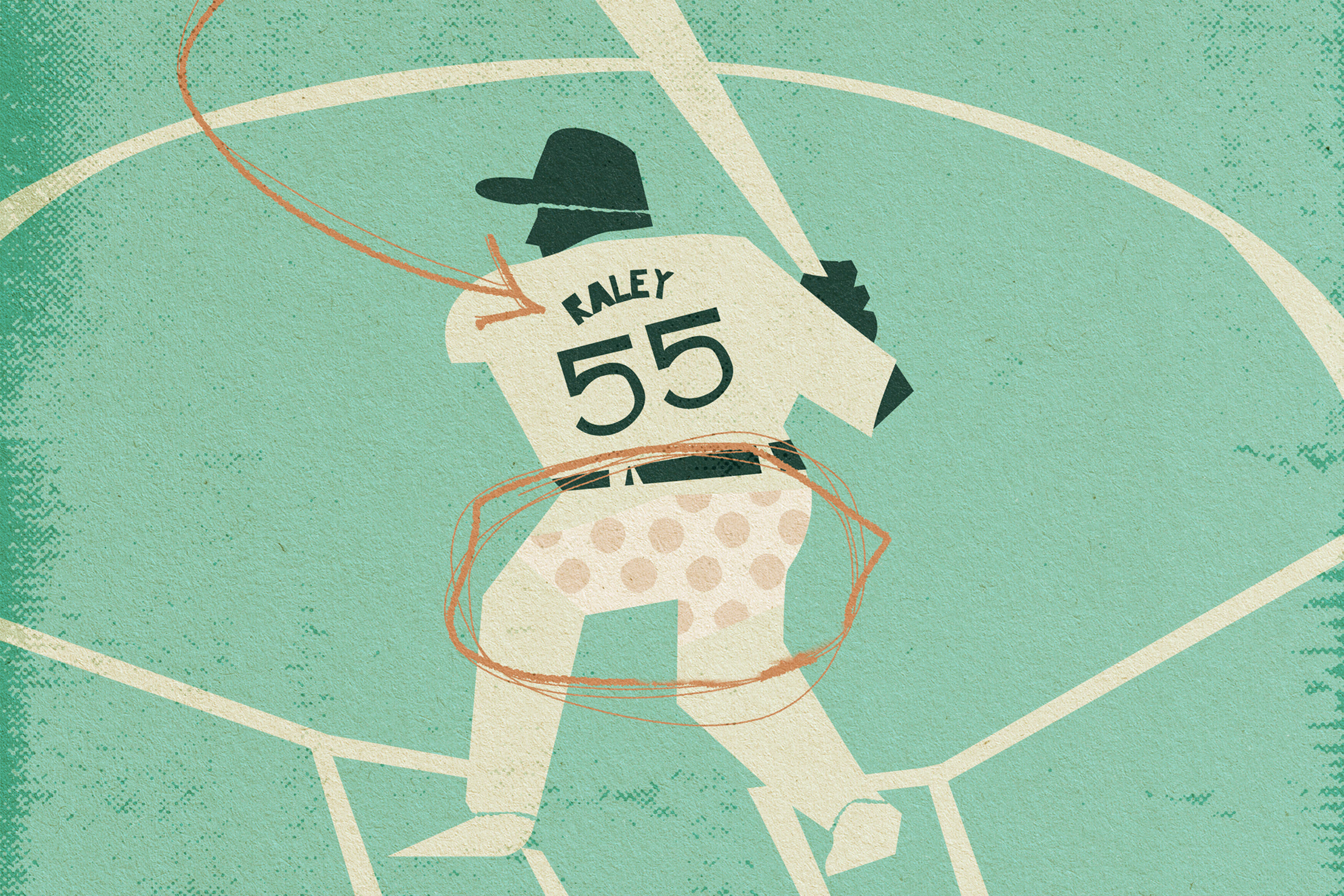The Decline and Fall of the Pac-12

Jake Dickert, Washington State University’s 40-year-old, second-year head football coach, was born and raised in Wisconsin. He still travels there each summer with his wife and three children to visit family and friends. His great uncle played football for the University of Wisconsin. After WSU upset the Badgers in Madison last season, television cameras captured Dickert’s emotional celebration with several family members at midfield.
So when Dickert’s Cougars beat Wisconsin again last weekend—this time in Pullman, again as underdogs—it figured that Dickert might be good for some postgame catharsis.
He certainly was, but for a starkly different reason.
The Pac-12 Conference is splintering next summer, with 10 of its members departing for other leagues—four to the Big Ten, four to the Big 12, and Stanford and Cal, somehow, to the, ahem, Atlantic Coast Conference—which presently leaves only WSU and Oregon State without a home. Their futures are so uncertain that earlier this week, the two schools sought and received a temporary restraining order preventing the departing 10 schools from calling a board meeting to make decisions about the league’s assets.
The cost of this upheaval? Only more than a century’s worth of tradition and history and possibly many jobs in Pullman and Corvallis as the programs there prepare for significant athletics cost reductions. Realignment has already killed some rivalries; it remains to be seen whether UW and WSU will continue playing the Apple Cup. Conference structure also used to make geographic sense, but no more.
The only proper explanation for why WSU and OSU are the only two schools searching for a new league is that the other 10 programs happen to be attached to larger media markets, and therefore were viewed as more desirable by the television networks that have come to informally govern the sport. (Or, as with the University of Oregon, have invested and won to a great enough degree that local market size is no longer an adequate measure of their brand.)
Never mind that this week’s Associated Press Top-25 poll includes both WSU and OSU, or that the Beavers won 10 games last season, or that the Cougars haven’t missed a bowl game since 2014 (save for the fever-dream pandemic season in 2020), or that WSU’s television viewership has often transcended its supposed media market.
Only in college football would relegation be unrelated to recent performance.
It all has Dickert touting a “Cougs vs. Everybody” mantra this year, and it had him choking up on national television Saturday (the game, broadcast on ABC, reportedly drew more than two million viewers). But rather than revel in the standard thrill of toppling a Big Ten program, Dickert channeled the bigger picture when he looked into the sideline reporter’s eyes and declared: “We belong in the Power Five.”
That WSU’s coach would feel compelled to make such a proclamation is an indictment of how wrongheaded the sport has become. It’s true that the Cougars are not among its league’s most consistent championship contenders, historically, but the past decade has almost exclusively produced winning records and postseason appearances; they've held a perfectly respectable record of 60-37 since 2015.
The current so-called Power Five conferences—the Pac-12, Big Ten, SEC, Big 12, and ACC—include 69 schools, the sport’s most successful programs among them. WSU’s annual athletics budget is the smallest of that group, yet the Cougars often defeat richer schools, and have leveraged what resources they do have, including fighting for and securing equal sharing of the league’s media-rights revenue to make needed facilities upgrades throughout the past 12 or so years.
WSU invested heavily in its football program, along with its conference peers, believing that the Pac-12 would cash in on its next media-rights deal, after its current television contract with ESPN and Fox (signed 12 years ago, and therefore no longer of fair market value) expires next summer. Currently, the league distributes about $32 million in total media-rights money each year to each of its member schools; with all 12 members together, the conference could have reasonably expected annual per-school payments upwards of $40 million on its next deal. That still would have lagged far behind payouts in the powerful SEC and Big Ten, but would have been plenty to ensure the conference continued existing.
Those plans were thwarted on June 30, 2022, when, seemingly out of nowhere, USC and UCLA announced their intent to leave the Pac-12 for the Big Ten; without mega-brand USC in particular, and the Los Angeles market in general, the remaining Pac-12 members would not be nearly as valuable to the television networks who pay for media rights.
Realignment has shaken the college football landscape on several occasions throughout the past century, but the current cycle has been particularly turbulent. It began in the summer of 2021, when the SEC burnished its membership by poaching blue bloods Texas and Oklahoma from the Big 12. Not to be outdone, the Big Ten responded by expanding to include the lucrative Los Angeles market. As with most every major decision in college athletics, money was at the heart of it; schools in the Big Ten and SEC earn far greater revenue from those leagues’ television contracts, and USC and UCLA will be cut in at a full share.
The Pac-12 has been on life support thereafter. Colorado became the next domino, choosing to leave for the Big 12, which had secured a decent enough media-rights deal and acted aggressively to destabilize the Pac-12 as it slogged through its own TV negotiations with no resolution. Eventually, Pac-12 commissioner George Kliavkoff presented a potential deal to the school presidents. The lone partner would have been Apple, which wanted to broadcast Pac-12 games exclusively on its streaming platform. It proposed cash incentives for reaching certain subscriber numbers, but offered a guaranteed payout less than what Big 12 schools would receive.
It’s been widely reported that earlier in the negotiating process, ESPN offered an annual payout of $30 million per school—close enough to the Big 12’s reported mark of about $31.7 million—but the Pac-12 presidents thought they could get more. For a number of reasons, mass layoffs in the tech and media sectors, the general decline of the Pac-12’s football product and associated fan interest, institutional arrogance, they were wrong.
Eventually invited by the Big Ten, even at a significantly reduced media-rights share, at least to start, presidents at the University of Washington and University of Oregon informed their colleagues they would depart the conference rather than take a leap of faith on the Apple deal. That triggered Arizona, Arizona State, and Utah to finally join the Big 12, and, eventually, the ACC overcame some internal opposition to add both Stanford and Cal (and, if you can believe it, Southern Methodist University in Dallas).
It’s unlikely to stop here, either. Many believe the sport, driven by the interests of primary rights-holders Fox and ESPN, might eventually stratify into two leagues, or maybe just one, including only the schools that draw the largest number of TV viewers. This is what made the Big Ten so attractive to USC, UCLA, Washington, and Oregon. For schools that believe they should compete for championships, membership in the Big Ten or SEC is viewed as the equivalent of a seat at the cool kids’ table—a financial necessity, sadly, regardless of whether it actually increases their odds of winning a title.
The gosh darn of it: the Pac-12, beleaguered for many years by underperformance and administrative mismanagement, might be as good as ever. Eight of the league’s 12 teams are ranked among the nation’s top 25 this week, with six of them in the top 18. USC and Washington are in the top 10.
The Cougars jumped into the rankings this week.
Dickert was right. Washington State belongs. It always has. It’s only in this modern, soulless iteration of the sport that anyone would think it necessary to make the argument.
Christian Caple is the founder and proprietor of On Montlake, a Substack newsletter and website dedicated to coverage of University of Washington football (and the Pac-12, for now).




